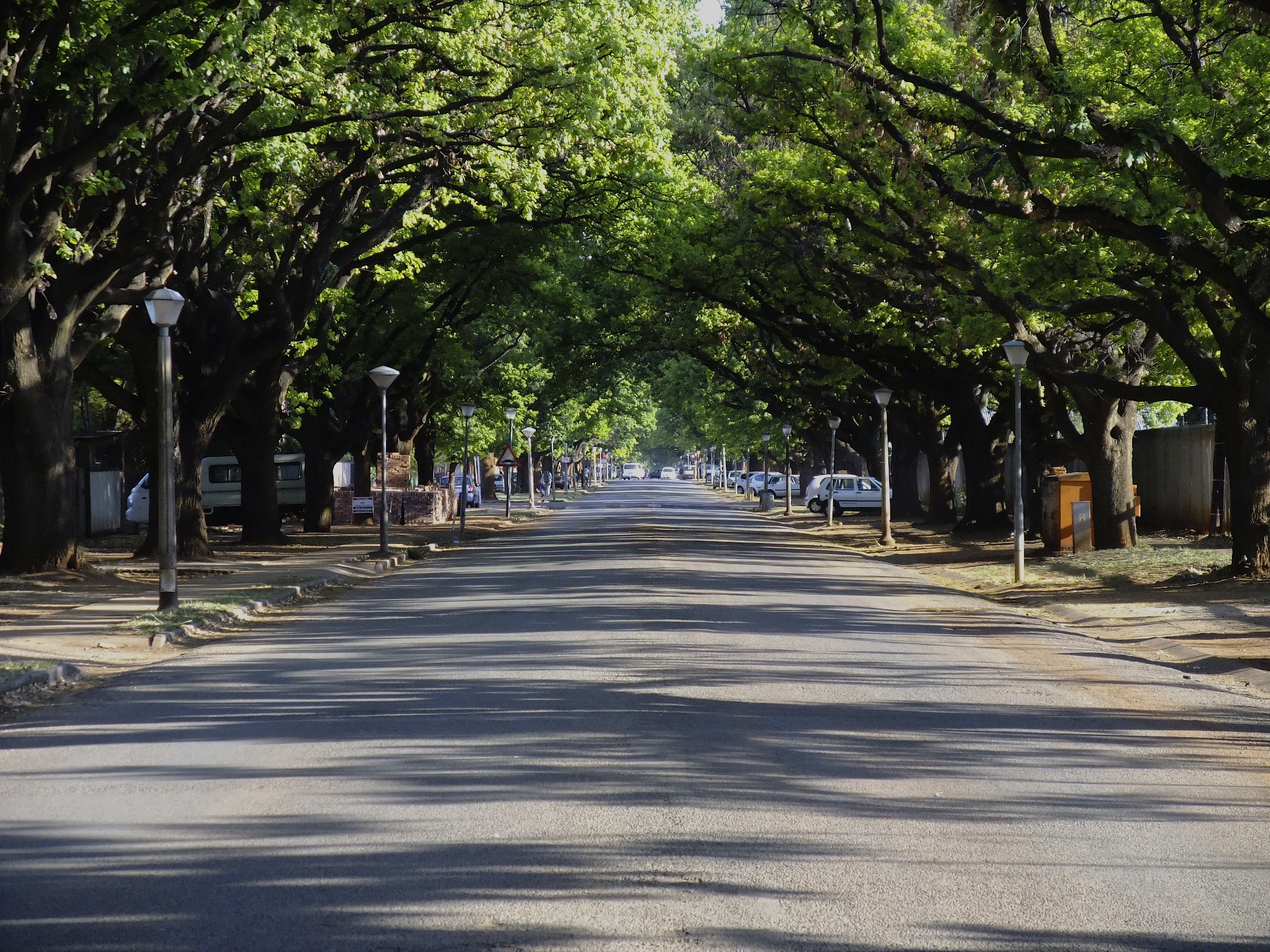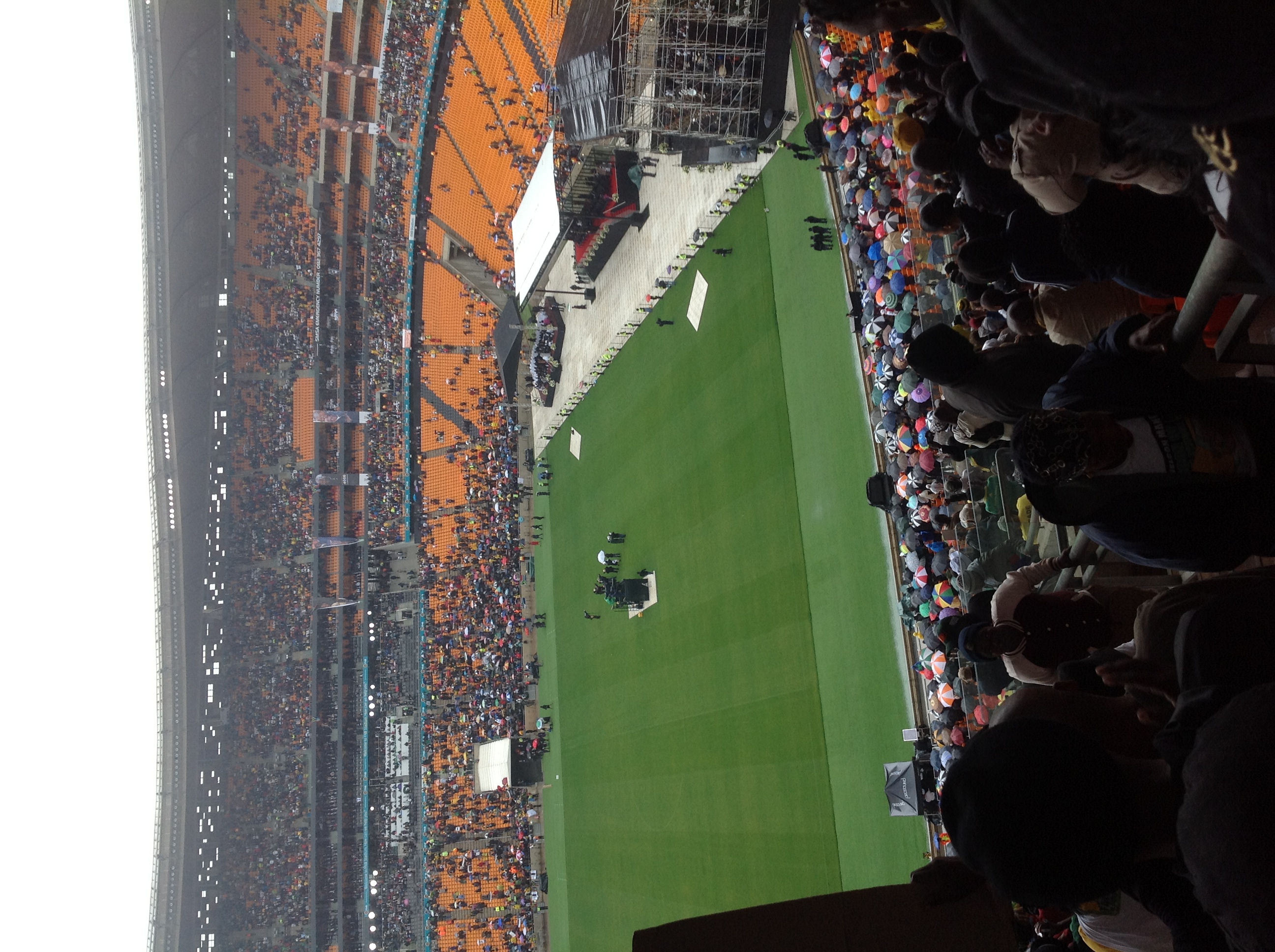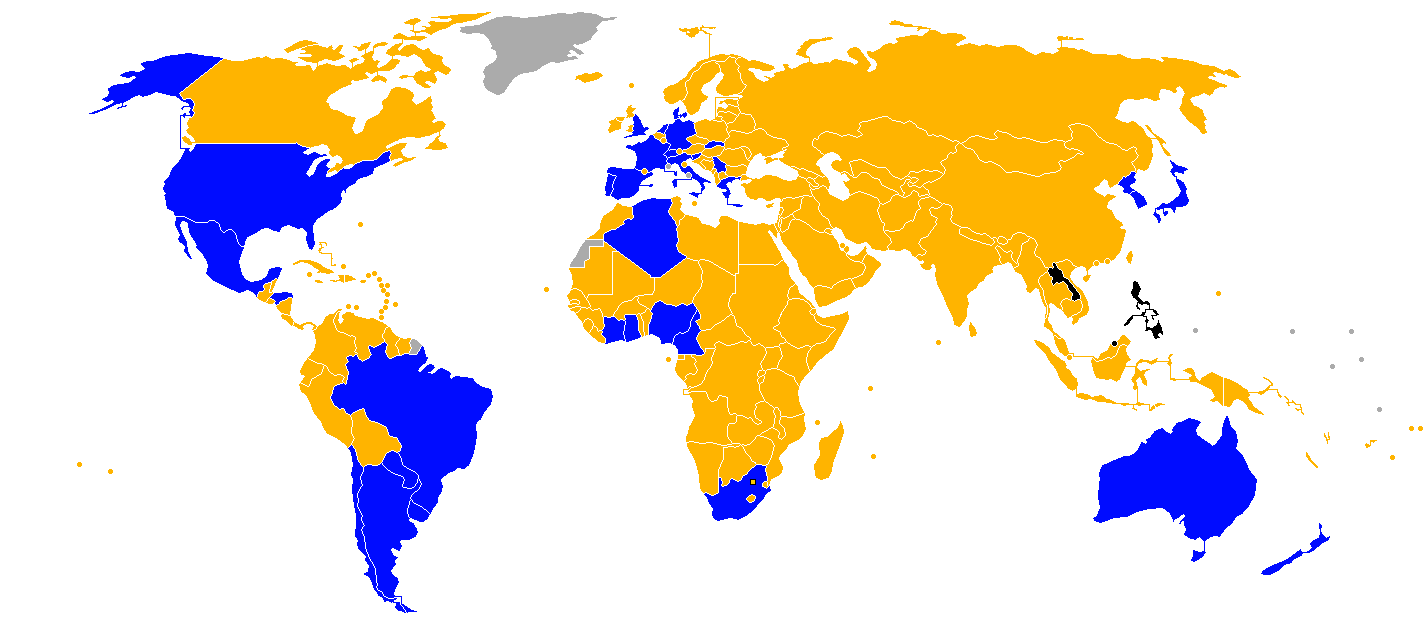|
Koreans In South Africa
Koreans in South Africa form the largest Korean diaspora community on the African continent and the 29th-largest in the world, ahead of Koreans in Spain and behind Koreans in Italy. History South Africa had considered importing labourers from Korea as early as 1903 to control rising mining wages, but eventually decided on Chinese workers instead. The Immigration Act of 1913 classified all Asians as "prohibited immigrants", thus preventing them from settling in the country or conducting commercial activities there. In 1930, when then-Minister of the Interior D. F. Malan made the decision to exclude Japanese from the "prohibited immigrants" category as defined by the 1913 Act, Koreans remained prohibited immigrants, though Jan Smuts angrily protested that the exemption represented a precedent for opening the door to Koreans and Chinese as well. In fact, it came to pass as Smuts predicted: Koreans were removed from the "prohibited immigrants" category in the 1960s. However, the K ... [...More Info...] [...Related Items...] OR: [Wikipedia] [Google] [Baidu] |
Johannesburg
Johannesburg ( , , ; Zulu and xh, eGoli ), colloquially known as Jozi, Joburg, or "The City of Gold", is the largest city in South Africa, classified as a megacity, and is one of the 100 largest urban areas in the world. According to Demographia, the Johannesburg–Pretoria urban area (combined because of strong transport links that make commuting feasible) is the 26th-largest in the world in terms of population, with 14,167,000 inhabitants. It is the provincial capital and largest city of Gauteng, which is the wealthiest province in South Africa. Johannesburg is the seat of the Constitutional Court, the highest court in South Africa. Most of the major South African companies and banks have their head offices in Johannesburg. The city is located in the mineral-rich Witwatersrand range of hills and is the centre of large-scale gold and diamond trade. The city was established in 1886 following the discovery of gold on what had been a farm. Due to the extremely large gold ... [...More Info...] [...Related Items...] OR: [Wikipedia] [Google] [Baidu] |
Western Cape
The Western Cape is a province of South Africa, situated on the south-western coast of the country. It is the fourth largest of the nine provinces with an area of , and the third most populous, with an estimated 7 million inhabitants in 2020. About two-thirds of these inhabitants live in the metropolitan area of Cape Town, which is also the provincial capital. The Western Cape was created in 1994 from part of the former Cape Province. The two largest cities are Cape Town and George. Geography The Western Cape Province is roughly L-shaped, extending north and east from the Cape of Good Hope, in the southwestern corner of South Africa. It stretches about northwards along the Atlantic coast and about eastwards along the South African south coast ( Southern Indian Ocean). It is bordered on the north by the Northern Cape and on the east by the Eastern Cape. The total land area of the province is , about 10.6% of the country's total. It is roughly the size of England or the ... [...More Info...] [...Related Items...] OR: [Wikipedia] [Google] [Baidu] |
After-school Activity
After-school activities, also known as after-school programs or after-school care, started in the early 1900s mainly just as supervision of students after the final school bell. Today, after-school programs do much more. There is a focus on helping students with school work but can be beneficial to students in other ways. An after-school program, today, will not limit its focus on academics but with a holistic sense of helping the student population. An after-school activity is any organized program that youth or adult learner voluntary can participate in outside of the traditional school day. Some programs are run by a primary or secondary school, while others are run by externally funded non-profit or commercial organizations. After-school youth programs can occur inside a school building or elsewhere in the community, for instance at a community center, church, library, or park. After-school activities are a cornerstone of concerted cultivation, which is a style of parenting ... [...More Info...] [...Related Items...] OR: [Wikipedia] [Google] [Baidu] |
Hagwon
Hagwon () is the Korean-language word for a for-profit private institute, academy, or cram school prevalent in South Korea. Although most widely known for their role as "cram schools", where children can study to improve test scores, hagwons actually perform several educational functions: * supplementary education that many children need just to keep up with the regular school curriculum * remedial education for the children who fall behind in their work * training in areas not covered in schools (or covered poorly in public schools) * preparation for students striving to improve test scores and preparing for the high school and university entrance examinations (the university entrance exam is also called suneung (수능)) Many other children, particularly younger children, attend nonacademic hagwons for piano lessons, art instruction, swimming, and taekwondo (태권도). Most young children in South Korea attend a hagwon. Hagwons also play a social role; occasionally children a ... [...More Info...] [...Related Items...] OR: [Wikipedia] [Google] [Baidu] |
Yonhap News Agency
Yonhap News Agency is a major South Korean news agency. It is based in Seoul, South Korea. Yonhap provides news articles, pictures and other information to newspapers, TV networks and other media in South Korea. History Yonhap (, , translit. ''Yeonhap''; meaning "united" in Korean) was established on 19 December 1980, through the merger of Hapdong News Agency and Orient Press. The Hapdong News Agency itself emerged in late 1945 out of the short-lived Kukje News, which had operated for two months out of the office of the Domei, the former Japanese news agency that had functioned in Korea during the Japanese colonial era. In 1999 Yonhap took over the Naewoe News Agency. Naewoe was a South Korea government-affiliated organization, created in the mid 1970s, and tasked with publishing information and analysis on North Korea from a South Korean perspective through books and journals. Naewoe was known to have close links with South Korea's intelligence agency, and according to t ... [...More Info...] [...Related Items...] OR: [Wikipedia] [Google] [Baidu] |
North-West University
af , Noordwes-Universiteit , image = https://www.nwu.ac.za/sites/www.nwu.ac.za/files/NWU-Logo-SW.png , motto = ''Dit Begin Alles Hier (Afrikaans)'' ''Gotlhe Go Simolola Fano (Setswana)'' , mottoeng = ''It All Starts Here'' , established = 2004(''By merger of existing institutions'') , type = Public university , chancellor = Dr Anna Mokgokong , vice_chancellor = Dr Bismark Tyobeka , students = 53,997 , undergrad = 46,806 , postgrad = 7,191 , affiliations = AAU ACU HESA , former_names = Potchefstroom University for Christian Higher EducationPotchefstroom University University of Bophuthatswana , city = PotchefstroomMahikengVanderbijlpark , country = South Africa , nickname = NWU , colours = Purple, Turquoise and Grey , c ... [...More Info...] [...Related Items...] OR: [Wikipedia] [Google] [Baidu] |
Potchefstroom Campus
af , Noordwes-Universiteit , image = https://www.nwu.ac.za/sites/www.nwu.ac.za/files/NWU-Logo-SW.png , motto = ''Dit Begin Alles Hier (Afrikaans)'' ''Gotlhe Go Simolola Fano (Setswana)'' , mottoeng = ''It All Starts Here'' , established = 2004(''By merger of existing institutions'') , type = Public university , chancellor = Dr Anna Mokgokong , vice_chancellor = Dr Bismark Tyobeka , students = 53,997 , undergrad = 46,806 , postgrad = 7,191 , affiliations = AAU ACU HESA , former_names = Potchefstroom University for Christian Higher EducationPotchefstroom University University of Bophuthatswana , city = Potchefstroom MahikengVanderbijlpark , country = South Africa , nickname = NWU , colours = Purple, Turquoise and Grey , ... [...More Info...] [...Related Items...] OR: [Wikipedia] [Google] [Baidu] |
Potchefstroom, North West
Potchefstroom (, colloquially known as Potch) is an academic city in the North West Province of South Africa. It hosts the Potchefstroom Campus of the North-West University. Potchefstroom is on the Mooi Rivier (Afrikaans for "pretty river"), roughly west-southwest of Johannesburg and east-northeast of Klerksdorp. Etymology Several theories exist about the origin of the city's name. According to one theory, it originates from ''Potgieter'' + ''Chef'' + ''stroom'' (referring to Voortrekker leader and town founder Andries Potgieter; "chef" indicates the leader of the Voortrekkers, and "stroom" refers to the Mooi River). Geoffrey Jenkins writes, "Others however, attribute the name as having come from the word 'Potscherf', meaning a shard of a broken pot, due to the cracks that appear in the soil of the Mooi River Valley during drought resembling a broken pot". M. L. Fick suggests that Potchefstroom developed from the abbreviation of "Potgieterstroom" to "Potgerstroom", w ... [...More Info...] [...Related Items...] OR: [Wikipedia] [Google] [Baidu] |
English As A Foreign Or Second Language
English as a second or foreign language is the use of English by speakers with different native languages. Language education for people learning English may be known as English as a second language (ESL), English as a foreign language (EFL), English as an additional language (EAL), English as a New Language (ENL), or English for speakers of other languages (ESOL). The aspect in which ESL is taught is referred to as teaching English as a foreign language ( TEFL), teaching English as a second language (TESL) or teaching English to speakers of other languages (TESOL). Technically, TEFL refers to English language teaching in a country where English is not the official language, TESL refers to teaching English to non-native English speakers in a native English-speaking country and TESOL covers both. In practice, however, each of these terms tends to be used more generically across the full field. TEFL is more widely used in the UK and TESL or TESOL in the US. The term "ESL" has ... [...More Info...] [...Related Items...] OR: [Wikipedia] [Google] [Baidu] |
Media Of South Africa
The mass media in South Africa has a large mass media sector and is one of Africa's major media centres. While South Africa's many broadcasters and publications reflect the diversity of the population as a whole, the most commonly used language is English. However, all ten other official languages are represented to some extent or another. Afrikaans is the second most commonly used language, especially in the publishing sector. Up until 1994, the country had a thriving Alternative press comprising community broadsheets, bilingual weeklies and even student "zines" and photocopied samizdats. After the elections, funding and support for such ventures dried up, but there has been a resurgence of interest in alternative forms of news gathering of late, particularly since the events of 11 September 2001. Press freedom Press freedom has a chequered history in South Africa. While some sectors of the South African media openly criticised the apartheid system and the National Party gove ... [...More Info...] [...Related Items...] OR: [Wikipedia] [Google] [Baidu] |
FNB Stadium
First National Bank Stadium or simply FNB Stadium ( af, ENB-stadion), also known as Soccer City ( af, Sokkerstad) and The Calabash, is an association football (soccer) and Rugby union stadium located in Nasrec, bordering the Soweto area of Johannesburg, South Africa. The venue is managed by Stadium Management South Africa (SMSA) and is a home of Kaizer Chiefs F.C. in the South African Premier Soccer League as well as key fixtures for the South African national football team. It is located next to the South African Football Association headquarters (''SAFA House'') where both the FIFA offices and the Local Organising Committee for the 2010 FIFA World Cup were housed. Designed as the main association football stadium for the World Cup, the FNB Stadium became the largest stadium in Africa with a capacity of 94,736. However, its maximum capacity during the 2010 FIFA World Cup was 84,490 due to reserved seating for the press and other VIPs. The stadium is also known by its nicknam ... [...More Info...] [...Related Items...] OR: [Wikipedia] [Google] [Baidu] |
2010 FIFA World Cup
, image = 2010 FIFA World Cup.svg , size = 200px , caption = ''Ke Nako. (Tswana and Sotho for "It's time") Celebrate Africa's Humanity''''It's time. Celebrate Africa's Humanity'' (English)''Dis tyd. Vier Afrika se mensdom'' (Afrikaans)''Isikhathi. Gubha Ubuntu Base-Afrika'' (Zulu)''Lixesha. Ukubhiyozela Ubuntu baseAfrika'' (Xhosa)''Inguva. Kupemberera hupenyu hweAfrica'' (Shona)''Ke nako. Keteka Batho ba Afrika'' (Southern Sotho) , country = South Africa , dates = , confederations = 6 , num_teams = 32 , venues = 10 , cities = 9 , champion = Spain , count = 1 , second = Netherlands , third = Germany , fourth = Uruguay , matches = 64 , goals = 145 , attendance = , top_scorer = Diego Forlán Thomas Müller Wesley Sneijder David Villa(5 goals each) , player = Diego Forlán , goalkeeper = Iker Casillas , young_player = T ... [...More Info...] [...Related Items...] OR: [Wikipedia] [Google] [Baidu] |






